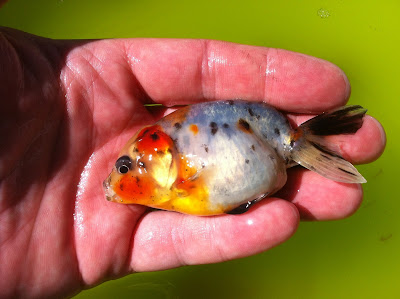 |
| Copyright © Ray Rich |
It is with great sadness that we inform you of the death of the goldfish expert Dr Joe Smartt.
Joe passed away peacefully at the Grange Nursing Home, Hedge End, Hampshire, on Friday June 7 in his 82nd year following a long illness which was stoically borne.
Joe was born in West Ham, London, on September 9th, 1931 and was educated at the nearby Forest Gate primary school. He gained degrees and qualifications at Durham, Cambridge and North Carolina Universities and, after working in Africa on a number of significant plant breeding programmes, he was offered a lectureship in genetics at Southampton University in 1967 and in 1990 he achieved the status of Reader in Biology.
Southampton University also honoured Joe by awarding him a DSC in 1989 for his work on the genetics and evolution of crop plants. In 1996, after 29 years of loyal service and distinguished research in evolutionary biology, Joe retired from the University.
Joe had a lifelong passion for all kinds of music and traditional instruments, steam trains, goldfish breeding and judging, and folk dancing; he was the founder of the University's first Morris men troop, the Red Stags.
Joe was clearly a man of many parts and
The Goldfish Society of Great Britain has been very fortunate in benefiting from his friendship and work on Goldfish genetics. He joined the Society in 1984 and began his regular contributions to the Bulletin, largely on Goldfish genetics, in 1986; stopping only 3-4 years ago when his health deteriorated.
He became the Society’s Scientific Adviser in 1988 and in acknowledgement of his work on Goldfish genetics he was awarded a Fellowship in 2000. He published two books on Goldfish genetics which, as far as I am aware, are the only books on Goldfish genetics written in English.
The books are "Goldfish Breeding and Genetics", written jointly with James (Jimmy) Bundell and "
Goldfish Varieties and Genetics" which has "text book" status.
In 2006 he achieved the Society’s highest accolade by being appointed our President, which was followed by the award of Life Membership in 2009.
One of the World’s gentlemen, Dr Joe will be greatly missed by his family and friends throughout the world and in particular by his "goldfish friends" in the UK and the USA.
Our thoughts are with Joe’s wife Pam and his daughters Helena and Frances and his brother Tony at this sad time.
Published: John Parker Monday 24 June 2013, 10:53 pmViews: 563 timesFiled under: obituary Joe Smartt goldfish expert genetics



















































